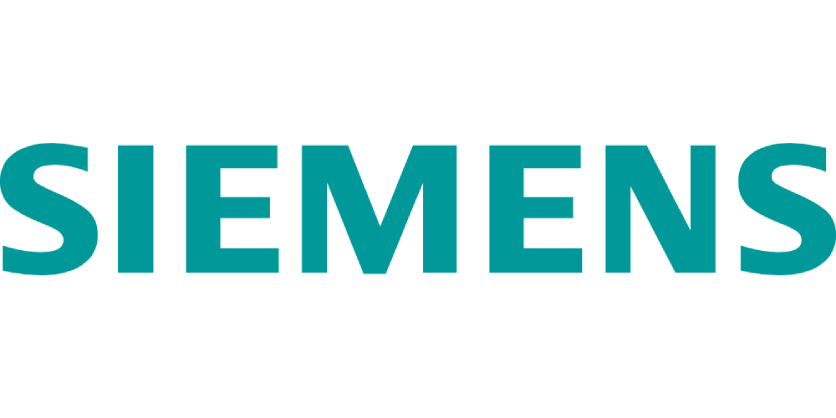Successful Start to Fiscal 2024 for Siemens
April 15, 2024

- Orders for Siemens in Q1 2024 reached €22.3 billion (Q1 2023: €22.6 billion); an increase of 2 percent on a comparable basis
- Revenue rose 6 percent on a comparable basis to €18.4 billion (Q1 2023: €18.1 billion)
- Profit Industrial Business totaled €2.7 billion (Q1 2023: €2.7 billion); profit margin Industrial Business increased to 15.8 percent (Q1 2023: 15.7 percent)
- Free cash flow at Group level rose sharply year-over-year to €1.0 billion (Q1 2023: €0.1 billion)
- Net income climbed 56 percent to €2.5 billion (Q1 2023: €1.6 billion)
- Outlook for fiscal 2024 confirmed
- Virtual Annual Shareholders’ Meeting to vote on dividend proposal of €4.70 per share for fiscal 2023 (fiscal 2022: €4.25
Siemens made a successful start to fiscal 2024 with a strong performance in the first quarter (ended December 31, 2023). At €2.7 billion, Profit Industrial Business increased at nearly all industrial businesses to reach a record high for the first quarter of a fiscal year. On this basis, Siemens confirms its outlook for the current fiscal year 2024. As announced in November 2023, the company is also initiating a new share buyback program in the near term with a volume of up to €6 billion over a period of up to five years.
“Siemens again delivered a strong quarter, maintaining a trajectory of profitable growth. We expanded our partnerships with Microsoft and AWS to make artificial intelligence even more accessible. Our customers have full confidence in us as their technology partner to support them with their digital and sustainability transformations,” said Roland Busch, President and CEO of Siemens AG.
“Our free cash flow rose to above €1 billion – a clear increase over the prior-year quarter. Our focus remains on our execution strength, and we confirm our outlook for fiscal 2024,” said Ralf P. Thomas, Chief Financial Officer of Siemens AG.
Profit Industrial Business sets first-quarter record
In Q1 2024, Siemens increased revenue 6 percent on a comparable basis – that is, excluding currency translation and portfolio effects – to €18.4 billion (Q1 2023: €18.1 billion). Orders totaled €22.3 billion (Q1 2023: €22.6 billion), a 2 percent increase year-over-year on a comparable basis. The book-to-bill ratio was a strong 1.21. The order backlog was at the record level of €113 billion.
Profit Industrial Business totaled €2.7 billion, an increase of 3 percent and a new record for the first quarter of a fiscal year (Q1 2023: €2.7 billion). The profit margin of the Industrial Business improved to 15.8 percent (Q1 2023: 15.7 percent). Net income climbed 56 percent to €2.5 billion (Q1 2023: €1.6 billion), a particularly strong development that included a €0.5 billion gain from Siemens Energy Investment due to the transfer of an 8.0 percent stake in Siemens Energy AG to Siemens Pension-Trust e.V. and the termination of at-equity method accounting. At €3.19, corresponding basic earnings per share before purchase price allocation accounting were 53 percent higher than in the prior-year quarter (Q1 2023: €2.08).
Free cash flow all-in at Group level from continuing and discontinued operations reached €1.0 billion, a seasonally excellent level and a very considerable improvement year-over-year (Q1 2023: €0.1 billion). This increase was due primarily to the very strong increase to €1.3 billion in free cash flow at the Industrial Business (Q1 2023: €0.4 billion).
Strong performance at Smart Infrastructure and Mobility for Siemens
Revenue at Digital Industries totaled €4.6 billion and remained nearly stable on a comparable basis. Higher revenue at the software business was more than offset by revenue declines at the automation businesses, particularly in the case of higher-margin products. Orders declined 31 percent on a comparable basis to €4.0 billion due primarily to the automation businesses as market conditions softened year-over-year and customers continued destocking. Profit declined 20 percent to €895 million due primarily to lower capacity utilization and a less favorable product mix. As a result, the profit margin was 19.6 percent.
In a challenging environment, order intake at Smart Infrastructure was a strong €5.8 billion and at the same high level as in the prior-year quarter. Orders again included a number of major contract wins. Revenue rose 9 percent on a comparable basis to €4.8 billion. All regions contributed to revenue growth since increasing demand for data centers and in the power distribution area, for example, helped offset macroeconomic headwinds particularly at the short-cycle businesses.
Profit climbed 26 percent to €885 million. The profit margin was 18.3 percent (Q1 2023: 15.3 percent). Both profit and profitability were at the highest level ever achieved at Smart Infrastructure, benefiting from a positive €94 million effect from the partial reversal of a liability related to past portfolio activities.
Mobility increased revenue 12 percent on a comparable basis to €2.7 billion. Orders climbed 92 percent on a comparable basis to €5.6 billion due to a higher volume of major orders. Mobility achieved double-digit revenue growth at all its businesses, whereby the backlog conversion at its rolling stock and rail infrastructure businesses was particularly strong. Profit rose 29 percent to €251 million. The profit margin was 9.3 percent, benefiting also by around one percentage point from some trailing effects related to Russia.
Virtual Annual Shareholders’ Meeting to vote on dividend proposal raised
The ordinary Annual Shareholders’ Meeting of Siemens AG will take place today immediately following the publication of the company’s Q1 figures. Siemens shareholders will vote on a proposal by the Managing and Supervisory Boards to distribute a dividend of €4.70 per share entitled to a dividend for fiscal 2023. The proposed dividend is €0.45 higher than the dividend for fiscal 2022 and a testimony to Siemens’ progressive dividend policy.
Related Story
Siemens Reports Earnings Release Q1 FY 2022: Very Successful Start to Fiscal 2022
Siemens’ outlook for fiscal 2022 remains unchanged. It is based on continuing healthy growth in global GDP, albeit with slowing momentum, and their expectation that the challenges to their businesses from COVID-19 and supply chain constraints will ease during fiscal 2022. With these conditions, they expect their industrial businesses to continue their profitable growth.




